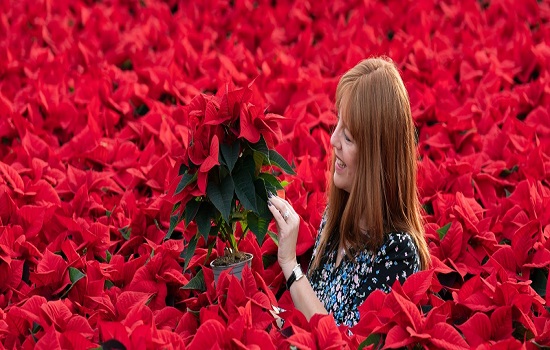They only became really popular in the UK in the 1980s but now poinsettia season is as much a symbol of the start of Christmas as mince pies.
And that’s good news for British growers who are taking over from the Dutch as the main supplier of the beautiful and vibrant scarlet house plants.
One of the UK’s biggest poinsettia growers is Bridge Farm Group, based in Spalding, Lincolnshire, who supply Tesco and who now grow more than a million a year.
In fact in the last five years alone they have increased their supply to the supermarket by nearly 800 per cent.
Tesco plant buyer Vicky l’Anson said: “When poinsettias first became popular as a houseplant in the late 20th Century we used to import them from Holland, but now most of our stock is grown in the UK, with Bridge Farm Group our main supplier. “The British variety are more acclimatised to the UK climate, so not only do they involve fewer road miles by being grown closer to home, but they are hardier too.”
The poinsettia season is one of the shortest and they remain in stores for roughly eight weeks – from the end of October till the end of December.
Bridge Farm Group Managing Director Louise Motala said: “Growing poinsettia at this time of year requires heat and we know that Dutch growers have cut back on production this year due to rising gas prices.
“We have been able to manage our energy costs through the use of sustainable biomass heating, enabling us to continue to produce over one million UK grown poinsettias again this year and ensuring that consumers will still be able to buy this much-loved festive plant this Christmas.”
Poinsettias originated in Mexico where they originally grew much like a straggly weed. They got the name “Poinsettia” after Joel Roberts Poinsett who was a representative of the United States to Mexico as well as being a keen botanist.
They were successfully cultivated in the US during the early 1900’s by a German immigrant named Albert Ecke. Later generations of the Ecke family successfully marketed poinsattias as a Christmas themed plant during the second half of the 20th century.
Source: Tesco


